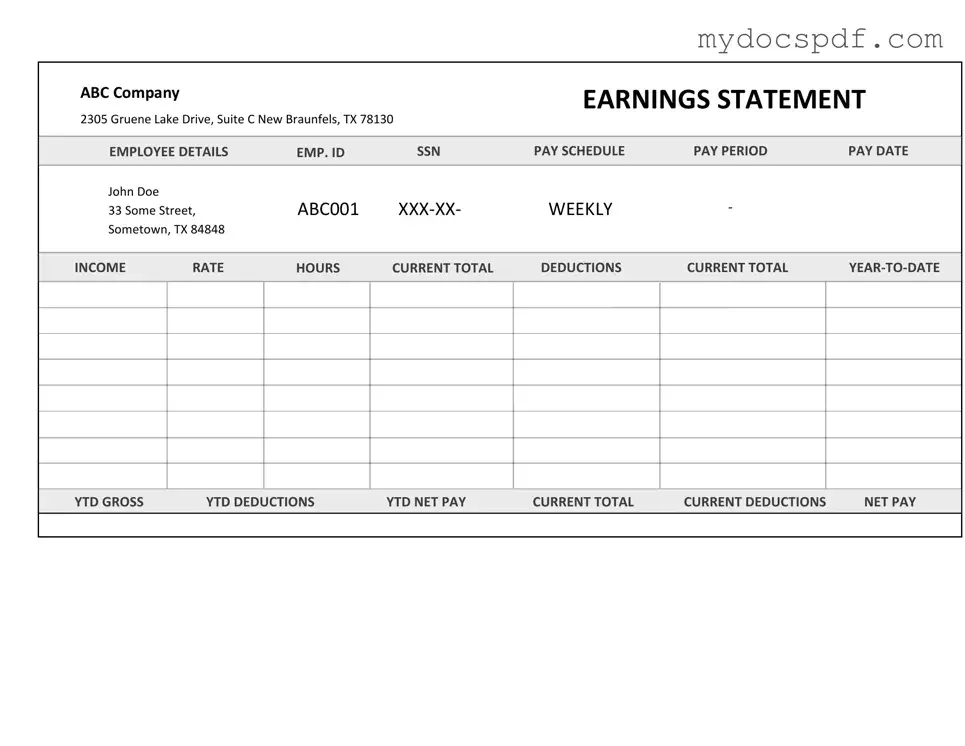In the world of freelance work and independent contracting, understanding payment documentation is essential for both contractors and clients. One critical piece of this puzzle is the Independent Contractor Pay Stub form, a document that serves as a detailed record of earnings for services rendered. This form typically includes vital information such as the contractor's name, the services provided, the payment period, and the total amount earned. It may also outline any deductions or withholdings, which can be particularly important for tax purposes. By providing a clear breakdown of earnings, the pay stub not only helps contractors keep track of their income but also ensures transparency between the contractor and the hiring entity. Furthermore, having this documentation on hand can simplify financial planning and tax filing, making it a valuable tool in the independent contractor's arsenal. Understanding the components of the pay stub empowers contractors to take charge of their finances and fosters a professional relationship with clients.
